1. Introduction
Consider the following Euler-Poisson system for the bipolar hydrodynamical model of semi-conductor devices:
|
{n1t+j1x=0,j1t+(j21n1+p(n1))x=n1E−j1,n2t+j2x=0,j2t+(j22n2+q(n2))x=−n2E−j2,Ex=n1−n2−D(x),
|
(1)
|
in the region Ω=(0,1)×R+. In this paper, n1(x,t), n2(x,t), j1(x,t), j2(x,t) and E(x,t) represent the electron density, the hole density, the electron current density, the hole current density and the electric field, respectively. In this note, we assume that the p and q satisfy the γ-law:p(n1)=n21 and q(n2)=n22 (γ=2), which denote the pressures of the electrons and the holes. The function D(x), called the doping profile, stands for the density of impurities in semiconductor devices.
For system (1), the initial conditions are
|
ni(x,0)=ni0(x)≥0,ji(x,0)=ji0(x),i=1,2,
|
(2)
|
and the boundary conditions at x=0 and x=1 are
|
ji(0,t)=ji(1,t)=0,i=1,2,E(0,t)=0.
|
(3)
|
So, we can get the compatibility condition
|
ji0(0)=ji0(1)=0,i=1,2.
|
(4)
|
Moreover, in this paper, we assume the doping profile D(x) satisfies
|
D(x)∈C[0,1] and D∗=supxD(x)≥infxD(x)=D∗.
|
(5)
|
Now, the definition of entropy solution to problem (1)−(4) is given. We consider the locally bounded measurable functions n1(x,t), j1(x,t), n2(x,t), j2(x,t), E(x,t), where E(x,t) is continuous in x, a.e. in t.
Definition 1.1. The vector function (n1,n2,j1,j2,E) is a weak solution of problem (1)−(4), if it satisfies the equation (1) in the distributional sense, verifies the restriction (2) and (3). Furthermore, a weak solution of system (1)−(4) is called an entropy solution if it satisfies the entropy inequality
|
ηet+qex+j21n1+j22n2−j1E+j2E≤0,
|
(6)
|
in the sense of distribution. And the (ηe,qe) are mechanical entropy-entropy flux pair which satisfy
|
{ηe(n1,n2,j1,j2)=j212n1+n21+j222n2+n22,qe(n1,n2,j1,j2)=j312n21+2n1j1+j322n22+2n2j2.
|
(7)
|
For bipolar hydrodynamic model, the studies on the existence of solutions and the large time behavior as well as relaxation-time limit have been extensively carried out, for example, see [1][2][3][4][5][6] etc. Now, we make it into a semilinear ODE about the potential and the pressures with the exponent γ=2. We can get the existence, uniqueness and some bounded estimates of the steady solution. Then, using a technical energy method and a entropy dissipation estimate, we present a framework for the large time behavior of bounded weak entropy solutions with vacuum. It is shown that the weak solutions converge to the stationary solutions in L2 norm with exponential decay rate.
The organization of this paper is as follows. In Section 2, the existence, uniqueness and some bounded estimates of stationary solutions are given. we present a framework for the large time behavior of bounded weak entropy solutions with vacuum in Section 3.
2. Steady solutions
In this part, we will prove the existence and uniqueness of steady solution to problem (1)−(4). Moreover, we can obtain some important estimates on the steady solution (N1,N2,E).
The steady equation of (1)−(4) is as following
|
{J1=J2=0,2N1N1x=N1E,2N2N2x=−N2E,Ex=N1−N2−D(x),
|
(8)
|
and the boundary condition
We only concern the classical solutions in the region where the density
|
infxN1>0 and infxN2>0.
|
(10)
|
hold.
Now, we introduce a new variation Φ(x), and make Φ′(x): = E(x). To eliminate the additive constants, we set ∫10Φ(x)dx=0. Then (2.1) turns into
|
{2N1x=Φx,2N2x=−Φx,Φxx=N1−N2−D(x).
|
(11)
|
Obviously, (11)1 and (11)2 indicate
|
{N1(x)=12Φ(x)+C1,N2(x)=−12Φ(x)+C2,Φxx(x)=12Φ(x)+C1+12Φ(x)−C2−D(x).
|
(12)
|
where C1 and C2 are two unknown positive constants. To calculate these two constants, we suppose*
*Using the conservation of the total charge: integrating (1)1 and (1)3 from 0 to 1
|
(∫10nidx)t=−∫10jixdx=0, for i=1,2,
|
we see this assumption is right.
|
∫10(ni(x,0)−Ni(x))dx=0 for i=1,2,
|
(13)
|
then
|
ˉn1:=∫10n1(x,0)dx=∫10N1(x)dx=∫10(Φ(x)2+C1)dx=C1,ˉn2:=∫10n2(x,0)dx=∫10N2(x)dx=∫10(−Φ(x)2+C2)dx=C2.
|
(14)
|
Substituting (14) into (12)3, we have
|
Φxx=Φ(x)+ˉn1−ˉn2−D(x).
|
(15)
|
Clearly, we can prove the existence and uniqueness of solutions to (15) with the Neumann boundary condition
Integrate(15) from x=0 to x=1, we get
Suppose Φ(x) attains its maximum in x0∈[0,1], then we get Φxx(x0)≤0† and
† If x0∈(0,1), then Φx(x0)=0, Φxx(x0)≤0 clearly. If x0=0 or x0=1, the Taylor expansion
|
Φ(x)=Φ(x0)+Φ′(x0)(x−x0)+Φ″(x0)2(x−x0)2+o(x−x0)2,
|
the boundary condition (16) indicates Φ″(x0)≤0.
So we get
Similarly, if Φ attains its minimum in x1∈[0,1], we obtain
Moreover, from (12),(14),(15),(18), and (19), we have
|
D∗+ˉn2+ˉn12≤N1(x)≤D∗+ˉn2+ˉn12,−D∗+ˉn2+ˉn12≤N2(x)≤−D∗+ˉn2+ˉn12,
|
(20)
|
|
D∗≤(N1−N2)(x)≤D∗ for any x∈[0,1].
|
(21)
|
Above that, the theorem of existence and uniqueness of steady equation is given.
Theorem 2.1. Assume that (5) holds, then problem (8), (9) has an unique solution (N1,N2,E), such that for any x∈[0,1]
|
n∗≤N1(x)≤n∗, n∗≤N2(x)≤n∗,
|
(22)
|
and
satisfy, where
|
n∗:=max{D∗+ˉn2+ˉn12,−D∗+ˉn2+ˉn12},n∗:=min{D∗+ˉn2+ˉn12,−D∗+ˉn2+ˉn12},
|
(24)
|
ˉn1, ˉn2 are defined in (14).
3. Large time behavior
Now, our aim is to prove the weak-entropy solution of (1)−(4) convergences to corresponding stationary solution in L2 norm with exponential decay rate. For this purpose, we introduce the relative entropy-entropy flux pair:
|
η∗(x,t)=2∑i=1(j2i2ni+n2i−N2i−2Ni(ni−Ni))(x,t)=(ηe−2∑i=1Qi)(x,t)≥0,
|
(25)
|
|
q∗(x,t)=2∑i=1(j3i2n2i+2niji−2Niji)(x,t)=(qe−2∑i=1Pi)(x,t),
|
(26)
|
where
|
Qi=N2i+2Ni(ni−Ni),Pi=2Niji,
|
ηe and qe are the entropy-entropy flux pair defined in (1.7).
The following theorem is our main result in section 3.
Theorem 3.1(Large time behavior) Suppose (n1,n2,j1,j2,E)(x,t) be any weak entropy solution of problem (1.1)−(1.4) satisfying
|
2(2D∗−ˉn1−ˉn2)<(n1−n2)(x,t)<2(2D∗+ˉn1+ˉn2),
|
(27)
|
for a.e. x∈[0,1] and t>0.
(N1,N2,E)(x) is its stationary solution obtained in Theorem 2.1. If
|
∫10η∗(x,0)dx<∞, ∫10(ni(s,0)−Ni(s))ds=0,
|
(28)
|
then for any t>0, we have
|
∫10[j21+j22+(E−E)2+(n1−N1)2+(n2−N2)2](x,t)dx≤C0e−˜C0t∫10η∗(x,0)dx.
|
(29)
|
holds for some positive constant C0 and ˜C0 .
Proof. We set
|
yi(x,t)=−∫x0(ni(s,t)−Ni(s))ds, i=1,2, x∈[0,1], t>0.
|
(30)
|
Clearly, yi(i=1,2) is absolutely continuous in x for a.e. t>0. And
|
yix=−(ni−Ni),yit=ji,y2−y1=E−E,yi(0,t)=yi(1,t)=0,
|
(31)
|
following (1.1), (2.1), and (2.1). From (1.1)2 and (2.1)2, we get y1 satisfies the equation
|
y1tt+(y21tn1)x−y1xx+y1t=n1E−N1E.
|
(32)
|
Multiplying y1 with (32) and integrating over (0,1)‡, we have
‡For weak solutions, (1) satisfies in the sense of distribution. We choose test function φn(x,t)∈C∞0((0,1)×[0,T)) and let φn(x,t)→yi(x,t) as n→+∞ for i=1,2.
|
ddt∫10(y1y1t+12y21) dx−∫10(y21tn1)y1x dx−∫10(n21−N21)y1xdx−∫10y21t dx=∫10(N1(y2−y1)y1+Ex2y21)dx.
|
(33)
|
In above calculation, we have used the integration by part. Similarly, from (1.1)4 and (2.1)3, we get
|
ddt∫10(y2y2t+12y22) dx−∫10(y22tn2)y2x dx−∫10(n22−N22)y2x dx−∫10y22t dx=−∫10(N2(y2−y1)y2+Ex2y22) dx.
|
(34)
|
Add (33) and (34), we have
|
ddt∫10(y1y1t+12y21+y2y2t+12y22) dx−∫10(n21−N21)y1xdx−∫10(n22−N22)y2x dx=∫10((y21tn1)y1x +(y22tn2)y2x) dx+∫10(y21t+y22t) dx+∫10(N1(y2−y1)y1+Ex2y21−N2(y2−y1)y2−Ex2y22) dx.
|
(35)
|
Since
|
∫10(N1(y2−y1)y1+Ex2y21−N2(y2−y1)y2−Ex2y22) dx=∫10n1−N1−n2+N2−D(x)2y21dx+∫10n2−N2−n1+N1+D(x)2y22dx−∫10N1+N22(y1−y2)2dx,
|
(36)
|
then, from (31)1 and (36) we get
|
ddt∫10(y1y1t+12y21+y2y2t+12y22) dx+∫10(N1+n1)y21x+∫10(N2+n2)y22xdx+∫10N1+N22(y1−y2)2dx=∫10((y21tn1)y1x+(y22tn2)y2x) dx+∫10(y21t+y22t) dx+∫10(n1−N1−n2+N2−D(x)2y21+n2−N2−n1+N1+D(x)2y22)dx.
|
(37)
|
Moreover, since
|
|yi(x)|=|∫x0yis(s)ds|≤x12(∫x0y2isds)12≤x12(∫10y2isds)12,x∈[0,1],
|
(38)
|
we can obtain
|
‖yi‖2L2=∫10|yi|2dx≤12‖yix‖2L2,
|
(39)
|
verifies for i=1,2. If the weak solutions n1(x,t) and n2(x,t) satisfy (27) then
|
infx{N1+n1}>supx{n1−N1−n2+N2−D(x)4},
|
(40)
|
and
|
infx{N2+n2}>supx{n2−N2−n1+N1+D(x)4},
|
(41)
|
hold, where we have used the assumption (5) and the estimate (23).
Following (39), (40) and (41), we have
|
∫10n1−N1−n2+N2−D(x)2y21dx<∫10(N1+n1)y21xdx,
|
(42)
|
and
|
∫10n2−N2−n1+N1+D(x)2y22dx<∫10(N2+n2)y22xdx.
|
(43)
|
Thus (36), (42), and (43) indicate there is a positive constant β>0, such that
|
ddt∫10(y1y1t+12y21+y2y2t+12y22) dx+β∫10(y21x+y22x)dx+∫10N1+N22(y1−y2)2dx≤∫10((y21tn1)y1x+(y22tn2)y2x) dx+∫10(y21t+y22t) dx=∫10(N1y21tn1+N2y22tn2) dx.
|
(44)
|
In view of the entropy inequality (6), and the definition of η∗ and q∗ in (25) and (26), the following inequality holds in the sense of distribution.
|
ηet+qex+j21n1+j22n2−j1E+j2E=η∗t+2∑i=1Qit+q∗x+2∑i=1Pix+j21n1+j22n2−j1E+j2E=η∗t+q∗x+j21n1+j22n2−j1E+j2E+j1E−j2E≤0.
|
(45)
|
Since
|
−j1E+j2E+j1E−j2E=(E−E)(j2−j1)=(y2−y1)(y2t−y1t),
|
(46)
|
then (44) turns into
|
η∗t+q∗x+y21tn1+y22tn2+(y2−y1)(y2t−y1t)≤0.
|
(47)
|
We use the theory of divergence-measure fields, then
|
ddt∫10(η∗+12(y2−y1)2)dx+∫10(y21tn1+y22tn2) dx ≤0,
|
(48)
|
where we use the fact
Let λ>2+2n∗>0. Then, we multiply (48) by λ and add the result to (44) to get
|
ddt∫10(λη∗+λ2(y2−y1)2+y1y1t+12y21+y2y2t+12y22)dx+β∫10(y21x+y22x)dx+∫10N1+N22(y1−y2)2dx+∫10((λ−N1)y21tn1+(λ−N2)y22tn2)dx≤0.
|
(50)
|
Using the estimate (22) in Theorem 2.1. and the Poincˊare inequality (39), we have
|
ddt∫10(λη∗+λ2(y2−y1)2+y1y1t+12y21+y2y2t+12y22)dx+β2∫10(y21x+y22x)dx+β2∫10(y21+y22)dx+n∗∫10(y1−y2)2dx+∫10(y21tn1+y22tn2)dx≤0.
|
(51)
|
Now, we consider η∗ in (25). Clearly
is the quadratic remainder of the Taylor expansion of the function n2i around Ni>n∗>0 for i=1,2. And then, there exist two positive constants C1 and C2 such that
|
C1y2ix≤n2i−N2i−2Ni(ni−Ni)≤C2y2ix.
|
(53)
|
Making C3=min{C1,12} and C4=max{C2,12}, then we get
|
C3(y21tn1+y22tn2+y21x+y22x)≤η∗≤C4(y21tn1+y22tn2+y21x+y22x).
|
(54)
|
Let
|
F(x,t)=λη∗+λ2(y2−y1)2+y1y1t+12y21+y2y2t+12y22,
|
then there exist positive constants C5, C6, and C7, depending on λ,n∗,β, such that
|
∫10F(x,t)dx=∫10[λη∗+λ2(y2−y1)2+y1y1t+12y21+y2y2t+12y22]dx≤C5∫10[(y21tn1+y22tn2)+n∗(y2−y1)2+β2(y21x+y22x) +β2(y21+y22)]dx≤C6∫10η∗dx,
|
(55)
|
and
|
0<C7∫10[(y21tn1+y22tn2)+n∗(y2−y1)2+β2(y21x+y22x) +β2(y21+y22)]dx≤∫10[λη∗+λ2(y2−y1)2+y1y1t+12y21+y2y2t+12y22]dx=∫10F(x,t)dx.
|
(56)
|
Then
|
ddt∫10F(x,t) dx+1C5∫10F(x,t)dx≤0,
|
(57)
|
and
|
∫10[(y21tn1+y22tn2)+n∗(y2−y1)2+β2(y21x+y22x) +β2(y21+y22)]dx≤1C7∫10F(x,t)dx≤1C7e−tC5∫10F(x,0)dx≤C8e−tC5∫10η∗(x,0)dx.
|
(58)
|
are given, following the Growall inequality and the estimates (55) and (56). Up to now, we finish the proof of Theorem 3.1.
Acknowledgments
In the process of the selected topic and write a paper, I get the guidance from my tutor: Huimin Yu. In the teaching process, my tutor helps me develop thinking carefully. The spirit of meticulous and the rigorous attitude of my tutor gives me a lot of help. Gratitude to my tutor is unable to express in words. And this paper supported in part by Shandong Provincial Natural Science Foundation (Grant No. ZR2015AM001).
Conflict of interest
The author declare no conflicts of interest in this paper.













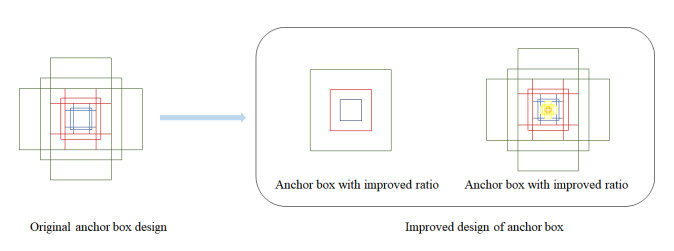
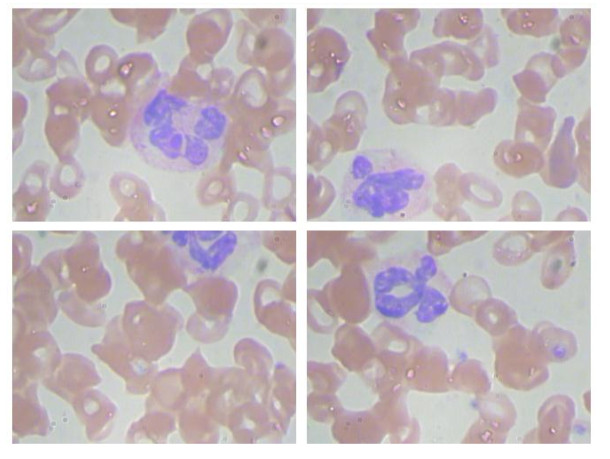
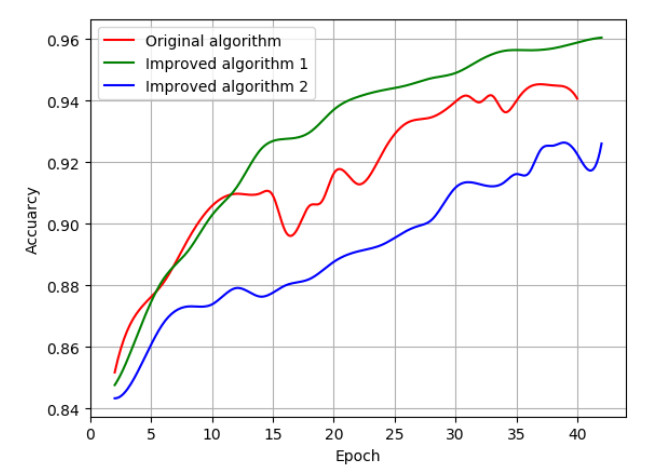
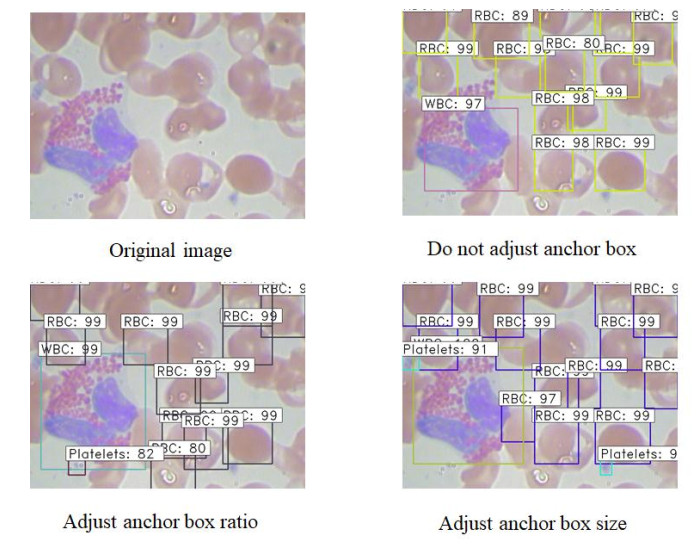

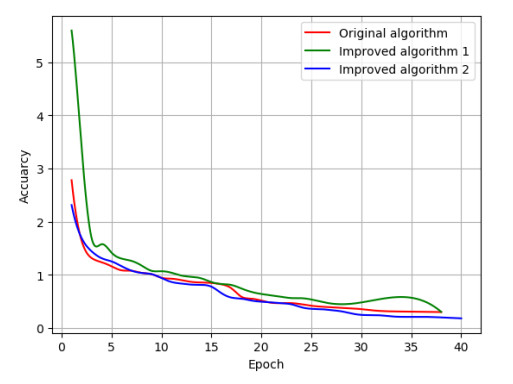


 DownLoad:
DownLoad: